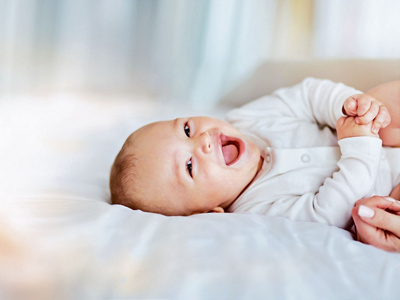A natural birth is a unique experience, so pregnant women want to be well prepared for it. When does the birth begin, how can I prepare myself for it, how does it all proceed, what happens afterwards? These and other questions concern parents-to-be and are answered below.
For many people, the birth of their own child is one of the most amazing moments in their life. However, the time before the birth and waiting for the birth is naturally also beset with questions and insecurities. Especially for women who are due to give birth to their first child. If the pregnancy proceeds without complications and there is no need for a caesarean, the child is usually born through a natural vaginal birth. The following information relates to natural births. The subject of [caesarean births] is discussed in a separate text.
What preparations are carried out before the procedure?
Pregnant women undergo regular pregnancy examinations during their pregnancy If the due date is approaching, it is a good idea to pack your bag for admission to hospital and to have the necessary documents (family book) ready so you are prepared when your labour starts.
Signs that the birth process has started are as follows:
- Amniorrhexis
- Regular and more frequent contractions (labour pains)
- Loss of the mucus plug which had closed the cervix, possibly with minor bleeding.
After admission in the birthing clinic, a pregnancy examination is carried out. The opening of the cervix is checked. The duration and the strength of the labour pains are documented and the well-being of the child is monitored. You will discuss your desired birthing position with the midwife and the doctor (on your back, lying on your side, sitting) and the different pain relief options.
How does the birth proceed?
In the early stage of labour, which can last around six to ten hours, the cervix opens. In the process, the labour pains get stronger and occur closer together. A warm bath can help you to relax and alleviate any pain. Some hospitals therefore also offer the option of a water birth. If the cervix has opened to around 10 cm, the second phase of labour usually begins. The contractions are now around four times stronger than at the beginning of labour. By bearing down strongly during every pain (bearing-down pains), you facilitate the birthing process. The child is pressed head first through the birth canal. Sometimes the pressure on the vaginal entrance is so strong that it threatens to tear. In this case, the doctor can perform a peritoneal incision to prevent a tear and facilitate the engagement of the head. As soon as the head has exited, the shoulders follow and the baby slides out of the birth channel.
The baby takes its first breath and the midwife lays the newborn on your stomach. While mother and child enjoy this close physical contact, the child's umbilical cord is cut. Afterwards, the baby is examined by the paediatrician and you remain in the delivery room for some time until the placenta has come away completely. If a peritoneal incision had to be carried out, this will be sutured.
The length of the birth process from the early stage through to the birth is individual and usually lasts between eight and fourteen hours for first births.
What are the possible complications and risks of a birth?
Childbirth is an exhilarating experience which is also connected with pain. There are various options for pain relief: breathing exercises, massage, acupuncture, baths or pain killers are usual. Mothers-to-be sometimes ask for regional anaesthesia (epidural anaesthesia) if the pain is too strong.
A birth usually proceeds without complications. However, supportive measures sometimes need to be taken. If the contractions are too weak or too irregular, they can be strengthened with hormones. Sometimes aids/tools such as the suction cups or forceps are used if the bearing-down pains alone are insufficient. The waters can be manually broken (amniorrhexis) to speed up the birth.
If there are unforeseen difficulties during the birth or if there is a danger for the child, the surgeon can switch to a caesarean birth in the event of an emergency.
In rare cases, the placenta must be manually or surgically removed in the post-birth phase, but only if it has not completely detached.
What happens after the birth?
After the birth, you will spend several days on the maternity ward. You will receive instructions on and support with breastfeeding and caring for your baby. You can usually have your baby with you in your room round the clock. However, you can also entrust your baby to the care of the nursing personnel if want to rest and recuperate. With special postnatal gymnastics, you will learn to strengthen the abdominal muscles and the pelvic floor.
During the first eight weeks after the birth, you should still take regular breaks and avoid over-exerting yourself. Emotional fluctuations after the birth are normal and experienced by nearly every woman. Sometimes they can be so strong that you require support and professional help.
Centres 8
-
Maternity unit
-
Maternity Unit
Schänisweg
CH-5001 Aarau


